| A big problem for the
settling node method, small settling signals
are overrided by the 300mV clamping voltage from the
Schottky diodes. Unfortunately there are not many diodes available
with a lower voltage.
I thought much about many solutions, I didn't see any solution without switching. Some offer RF diodes with a low VF voltage and low capacitances. Tube diodes could be also a choice. let's try these old parts first. Sometimes it's a good idea start on the beginning than you'll understand the new days. |
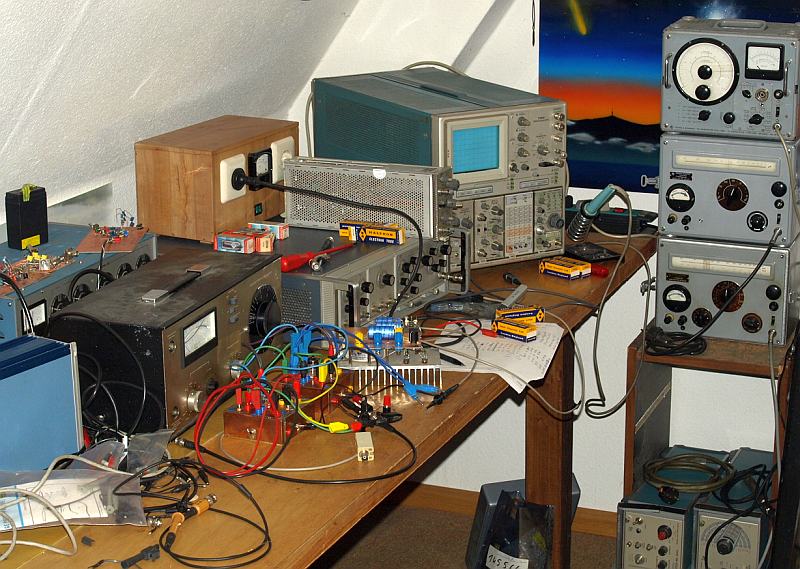

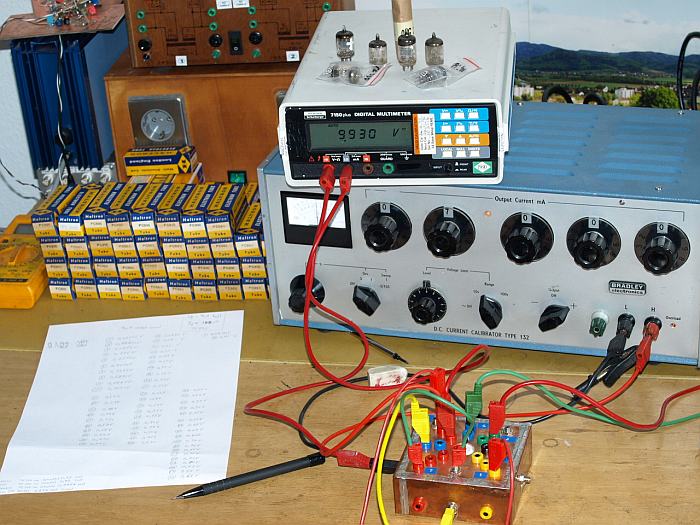
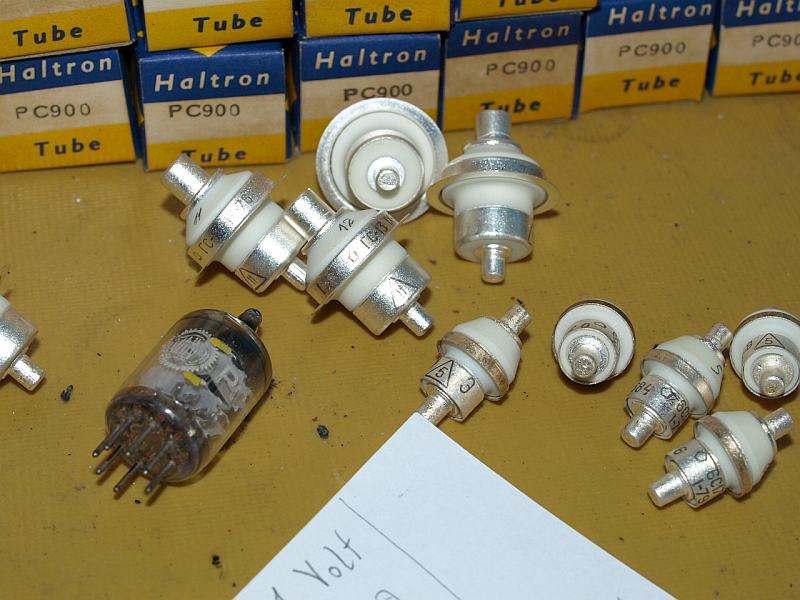
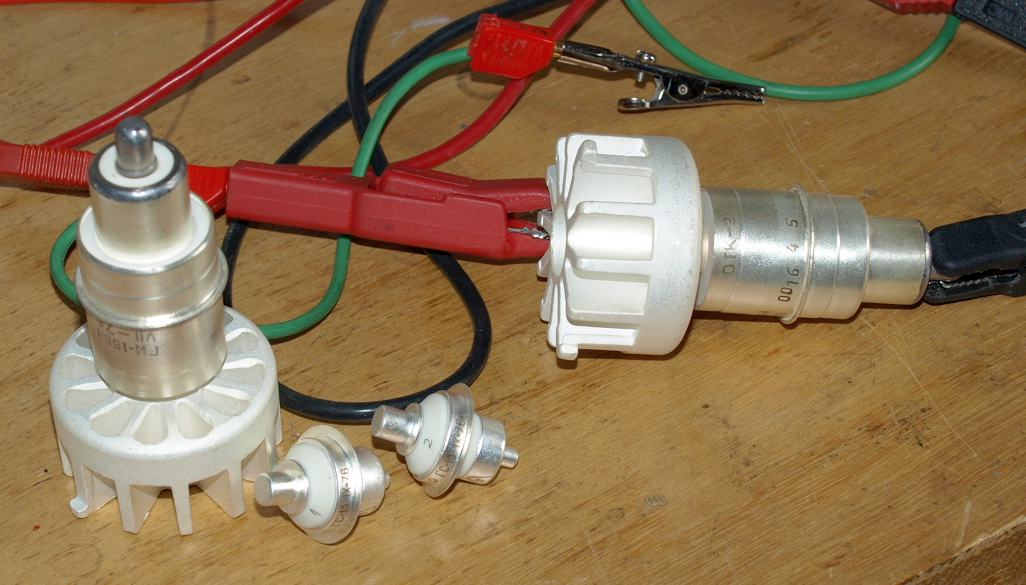

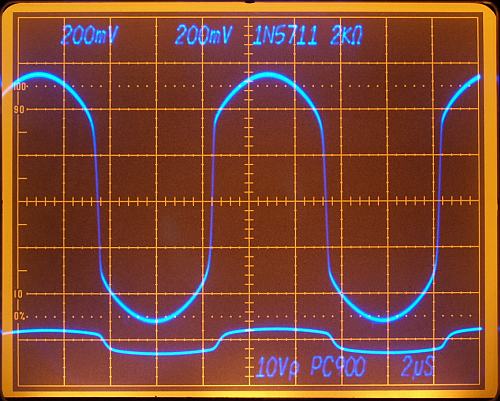

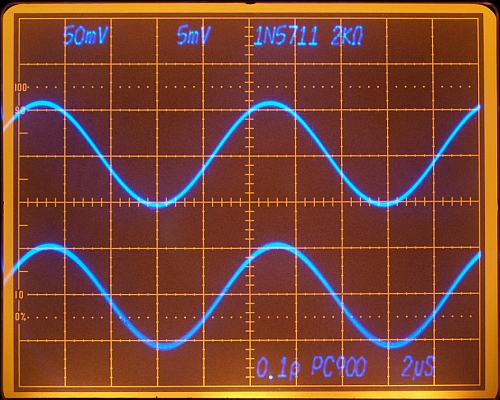

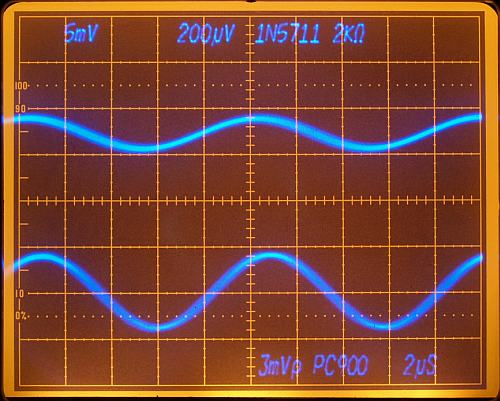
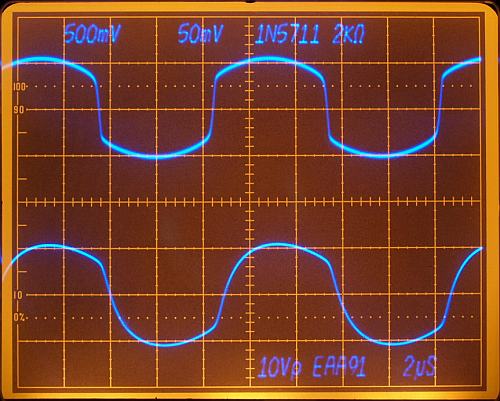
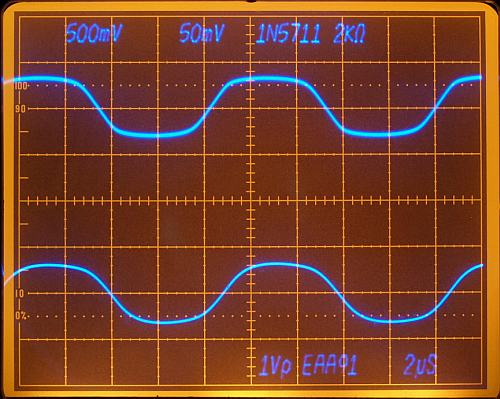


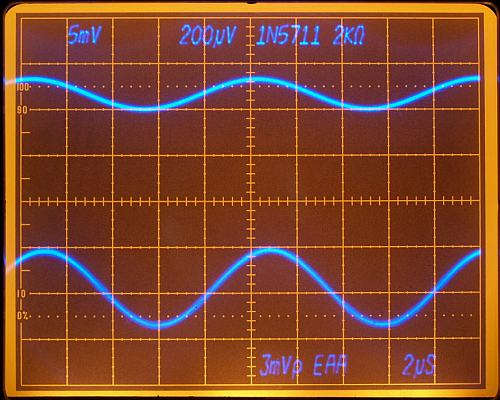

| (tt) | 6072 | 300mVpp |
| (tt) | ECC82 | 160mVpp |
| (tt) | ECC83 | 150mVpp |
| (tt) | ECC84 | 150mVpp |
| (dd) | EAA91 | 120mVpp |
| (tt) | ECC86 | 120mVpp |
| (p) | EF85 | 100mVpp |
| (tt) | ECC81 | 90mVpp |
| (tt) | ECC88 | 90mVpp |
| (tt) | ECC85 | 70mVpp |
| (p) | EF80 | 60mVpp |
| (p) | EF800 | 55mVpp |
| (p) | EF183 | 50mVpp |
| (p) | D3A | 50mVpp |
| (tt) | ECC189 | 45mVpp |
| (p) | EF184 | 30mVpp |
| (t) | PCC900 | 28mVpp |
| (t) | Russian GHz triode | 19mVpp |
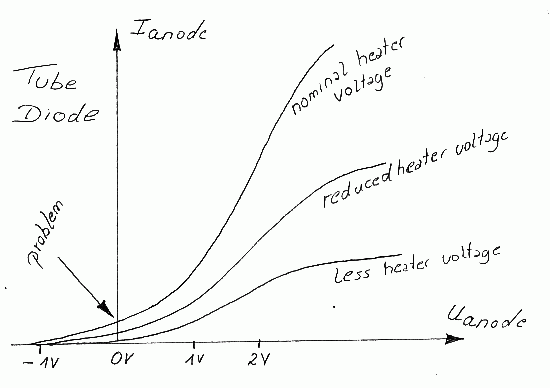
Radiated free electrons from the glowing cathode cause an unwanted
current, if not blocked by a neagitve grid voltage of approxiamtely
-1V. Need a switch to avoid this inrush-current, grid switch.
Unfortunately I don't see a change to work with tubes, but it was a nice experiment having some fun. I am still waiting for special diodes. |

